Generalitat is the name of two major medieval and early modern political institutions and their modern-day analogues in Kingdom of Spain. The ancient Principality of Catalonia and the Kingdom of Valencia were ruled by Generalitats. Today, Catalonia and The Valencian Community have systems of self-government called Generalitats, and are two of 17 autonomous communities of Spain. The term is also used for the government of the semi-autonomous comarca of Val d'Aran, the Generalitat a l'Aran.
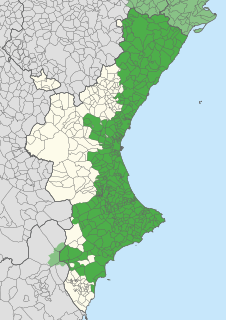
Valencian is the official, historical and traditional name used in the Valencian Community (Spain) to refer to the Romance language also known as Catalan. The Valencian Community's 1982 Statute of Autonomy and the Spanish Constitution recognise Valencian as the official language in the Valencian Community.
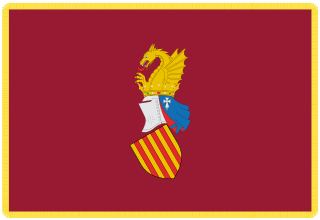
The Generalitat Valenciana is the generic name covering the different self-government institutions under which the Spanish autonomous community of Valencia is politically organized.

Tavernes de la Valldigna is a municipality in the Valencian Community, Spain, located in the district of Safor, 54 km far away from Valencia. It is the biggest town in La Valldigna, a horseshoe shape valley bordered by mountains on the west and the Mediterranean Sea to the east. Tavernes gained a City title in December 1916, by King Alfonso XIII. The mayor is Jordi Juan Huguet (2011-). According to the Spanish Statistic National Institute, INE, in 2010 there were 18.130 inhabitants in Tavernes: 9.126 men and 9.004 women.
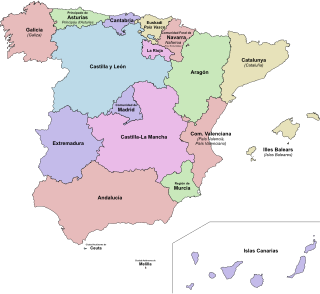
Jérica is a town in the Castellón province of Valencian Community, Spain. It is in the comarca (region) of Alto Palancia. Its population was 1,703 at the end of 2009.

Xert is a municipality in the comarca of Baix Maestrat in the Valencian Community, Spain.
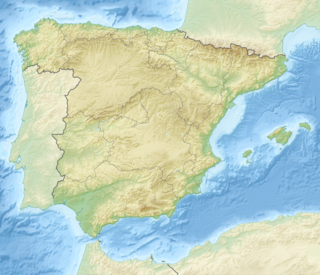
Llutxent is a town located in the eastern part of Spain, in the Valencian Community, within the county of the Vall d'Albaida, 80 km south of Valencia and 110 km north of Alicante. As of 2016, it is inhabited by 2,402 people.

Quart de Poblet is a municipality in the comarca of Horta Oest in the Valencian Community, Spain. It has 25,499 inhabitants.

Simat de la Valldigna is a municipality in the comarca of Safor in the Valencian Community, Spain. It is 50 km from Valencia, and 20 km from Cullera and Gandia. It is also near Xàtiva and Alzira.

Spanish Gothic architecture is the style of architecture prevalent in Spain in the Late Medieval period.

The flag of the Valencian Community and of the city of Valencia, known as Reial Senyera, is the traditional Senyera, composed of four red bars on a yellow background, crowned with a blue strip party per pale next to the hoist with 1/4 of the total length. It was adopted on July 1, 1982.

The coat of arms of the Valencian Community is the official emblem of the self-government institutions of the Valencian Community. It is based on the armorial achievement used from the reign of King Peter IV to John II, called the Great. In 1978 the former Council of the Valencian Country approved it “...for being the oldest known representative emblem of the former Kingdom of Valencia, that had located on the Xerea Gate of the city of Valencia”.
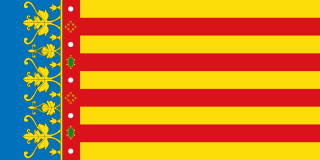
The Himne de l'Exposició or Himne de València is the official anthem of the Valencian Community, Spain. The song was composed by José Serrano Simeón with lyrics written by Maximiliano Thous Orts for the 1909 Valencian Regional Exhibition. The music is based on a 16th-century anthem dedicated to Saint George, who was the patron saint of the Kingdom of Valencia. It was approved by the mayors of Alicante, Castellón and Valencia in May 1925, and it was declared as the official anthem of the Valencian Community in 1981, with the approval of the Valencian Statute of Autonomy.

The Valencian Community is an autonomous community of Spain. It is the fourth most populous autonomous community after Andalusia, Catalonia and Madrid with more than five million inhabitants. Its homonymous capital Valencia is the third largest city and metropolitan area in Spain. It is located along the Mediterranean coast on the east side of the Iberian peninsula. It borders with Catalonia to the north, Aragon and Castilla–La Mancha to the west, and Murcia to the south. The Valencian Community consists of three provinces which are Castellón, Valencia and Alicante.

The Monastery of Sant Jeroni de Cotalba is a monastic building of Valencian Gothic, Mudéjar, Renaissance, Baroque and Neoclassical styles constructed between the 14th and 18th centuries, located in the municipal area of Alfauir, (Valencia), Spain, about 8 km. from the well-known city of Gandia.
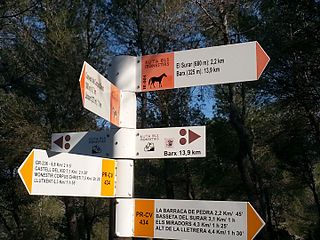
The Route of the Monasteries of Valencia (GR-236) is a religious and cultural route that connects five monasteries located in central region of the Province of Valencia,, in Spain. The Route was inaugurated in the year 2008.

The Route of the Borgias is a cultural route, that includes sites associated with the Borja or Borgia, located in their native Valencian Community, Spain. The marketing of the route was inaugurated in 2007.

The Monastery of Santa Maria de la Murta is a former monastery of the order of the Hieronymites located in the Valley of La Murta in Alzira (Valencia), Spain.

Valencian Gothic is an architectural style. It occurred under the Kingdom of Valencia between the 13th and 15th centuries, which places it at the end of the European Gothic period and at the beginning of the Renaissance. The term "Valencian Gothic" is confined to the Kingdom of Valencia and its area of influence, which has its own characteristics.


















